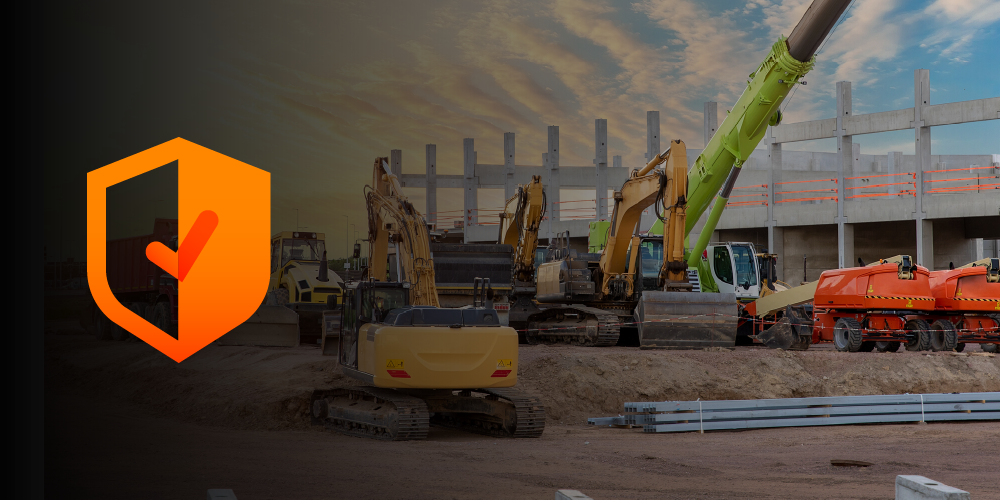— 4 min read
Builder’s Risk vs. General Liability for Contractors: What’s the Difference?
Last Updated Oct 25, 2023
Last Updated Oct 25, 2023

Construction businesses need many different types of insurance to mitigate the risks associated with building projects. Two of the most common insurance policies that contractors have are builder’s risk and general liability, which serve very different purposes.
Builder’s risk insurance, typically used by general contractors, covers property damage to a building under construction, while general liability insurance covers costs associated with third-party injuries or property damage caused by contractors.
| Builder’s Risk Insurance | General Liability Insurance | |
|---|---|---|
| Coverage | Covers a building under construction—and often tools, equipment, and materials related to the project. | Covers contractors against accidents, property damage, and in some cases, libel. |
| Policyholders | General contractors or Owners | General contractors and subcontractors |
| Type | First-party | Third-party |
To really understand the differences between builder’s risk vs. general liability insurance for contractors, keep reading for a detailed breakdown of each type of insurance and its purposes on a job site.
Table of contents
What is builder’s risk insurance?
Builder’s risk insurance provides coverage for buildings that are currently under construction. Also known as course of construction insurance, well-written builder’s risk policy can mitigate the risk a general contractor takes on with a complex project.
Buildings in progress are subject to many potential hazards, and builder’s risk insurance can help a builder recoup costs in the event of property damage. Common coverage on a builder’s risk policy includes damage from:
- Theft or vandalism
- Fire
- Lightning
- Hail
- Explosions
Depending on the insurance company and the region a builder operates in, they may need to extend their coverage to include higher limits and natural disasters (like hurricanes, tornadoes, or earthquakes).
In general, builder’s risk insurance does not only cover the structure itself, but also equipment, materials, and tools related to the project. However, individual contracts can vary, so contractors should pay careful attention to ensure that they get the coverage they need on a builder’s risk policy.
Materials can also be covered via an installation floater as part of a comprehensive builder’s risk policy. An installation floater applies strictly to building materials, while a builder’s risk policy includes additional coverages such as general liability and business property protection.
Typically, builder’s risk insurance is purchased by general contractors. With these policies, general contractors can protect themselves from large financial losses associated with catastrophic damage to the structures they are building. In this way, builder’s risk insurance functions as an essential risk mitigation strategy, particularly for GCs working on large, complex, or costly projects.
What is general liability insurance?
General liability insurance, which is required by law in most states, covers contractors from business risks including injuries to customers or damage to customer property. These policies are one of the best forms of protection contractors have against lawsuits that arise from accidental injuries and property damage.
Construction is a risky industry, and costly or harmful accidents can occur on a jobsite. General liability provides coverage for injuries that other people sustain due to a contractor’s work.
For example, if a customer visits the jobsite and trips over the cord from a carpenter’s saw, the carpenter’s general liability policy would likely cover costs associated with the injury sustained by the customer. Similarly, if the carpenter’s work caused property damage rather than an injury, general liability insurance would typically provide coverage.
Typically, general liability insurance policies cover the following:
- Medical bills
- Settlements
- Legal fees
- Settlements
- Repairs and replacements
Importantly, general liability — despite the word “general” — does not cover everything. For instance, contractors need to have workers’ compensation insurance to protect against employee injuries, as general liability only covers third-party injuries. Additionally, while general liability covers non-professional negligence, coverage for negligence that relates to a contractor’s specialty requires professional liability insurance.
General liability is important for contractors and subcontractors, who all face the risk of an injury or property damage lawsuit whenever they set foot on a jobsite.
The difference between builder’s risk & general liability insurance
The main difference between builder’s risk insurance and general liability insurance is what exactly they protect.
Builder’s risk is called first-party insurance because it protects the general contractor’s building while it’s being constructed. In other words, the general contractor themself is protected by the policy.
On the other hand, general liability insurance is known as third-party insurance because it offers coverage in cases where other people or property are injured or damaged by a contractor’s work.
Notably, general liability insurance is generally required by law, whereas builder’s risk insurance is not. However, most general contractors still obtain builder’s risk policies for their projects, as the financial risk from catastrophic damage to a structure can be significant—and insurance mitigates that risk substantially.
Know your insurance needs
Builder’s risk and general liability insurance are just two of the insurance types associated with complex construction work. While the variety of insurance required to run a construction company may seem burdensome, the truth is that insurance is a valuable tool for risk mitigation in construction.
Construction companies face a wide variety of risks, including injuries, accidents, natural disasters, weather incidents, vandalism, theft, and more. By tailoring insurance coverages to their specific situation, savvy construction companies can ultimately save money in the long term.
Was this article helpful?
Thank you for your submission.
100%
0%
You voted that this article was . Was this a mistake? If so, change your vote here.
Scroll less, learn more about construction.
Subscribe to The Blueprint, Procore’s construction newsletter, to get content from industry experts delivered straight to your inbox.
By clicking this button, you agree to our Privacy Notice and Terms of Service.
Categories:
Tags:
Written by
Daniel Gray
28 articles
Daniel is an educator and writer with a speciality in construction. He has been writing construction content for Procore since 2022, and previously served as a Procore Content Manager before continuing to pursue an education career as an Assistant Headmaster for Valor Education in Austin. Daniel's experience writing for construction — as well as several clients under an agency — has broadened his knowledge and expertise across multiple subjects.
View profileExplore more helpful resources

What is Equipment Floater Insurance for Contractors?
Most contractors rely on tools and equipment to complete construction projects. But if something happens to those items, they can be expensive to replace. Contractors can benefit from purchasing an...

Construction Equipment Rental Insurance: How & Where to Get Coverage
Contractors and construction businesses that rent equipment should consider getting construction equipment rental insurance. This type of insurance covers the cost of replacing rented tools and equipment if they get...

Understanding Construction Insurance: Actuarial vs. Underwriting Factors
Determining the price of construction insurance is complex, with much of the work happening behind the scenes. Most construction companies interact primarily with an insurance broker or agent, but actuaries...

Construction Insurance Pricing: What Determines the Cost of Insurance?
Construction is a risky and litigious business, and insurance can help mitigate the risks for builders and owners. Construction insurance is a valuable and frequently required tool, so understanding how...